My new Canon EF24-105mm f4L IS II lens arrived last week, so I’m interrupting my Iceland travelogues again to bring you a review of this new offering from Canon!
I’ve done a few tests to see how this new offering from Canon compares to my 24-70mm f/2.8L lens in terms of distortion and sharpness, and I have a number of shots from a quick venture out into Tokyo to share with you as well. I will of course be sharing many more images from this lens in the coming months, as I get back into the field for my regular shooting with it, especially my Hokkaido Landscape Adventure tour in January, when this will really be my workhorse lens and I’m sure it will also be used a lot on my Japan wildlife tours after that.
Distortion and Sharpness Tests
First, let’s jump in and take a quick look at my distortion test results. For this test, I set up a 5Ds R camera on a tripod, with a Profoto studio strobe in a softbox, just above the camera to the left, as you can see in this photo (below). This resulted in the top of the chart being a little bit brighter than the bottom, but I was only really interested in seeing if there was any difference in the amount of distortion the lens has at a few key focal lengths.
I no longer own the original 24-105mm lens, as I sold that around 10 years ago, when the resolution increase in our cameras rendered it a little too soft for my liking. Because of this, I did my tests at 24, 50 and 70mm, on both lenses, then did one last test with the new lens at 105mm to see how much distortion I could detect.
Also, note that I used some magnets to pin the test chart to my whiteboard, and I put a couple of them over the chart, to stop it from lifting up, so the chart is pretty much perfectly flat.
Field of View Narrower
To cut a long story short, both lenses perform pretty much the same in terms of distortion with the new 24-105mm perhaps just beating the old 24-70mm by a hair. You’ll notice immediately that despite the fact that I did not move the camera between shots, the 24-70mm lens has an obviously wider field of view than the 24-105mm, despite them both being set to their widest focal length of 24mm.
Canon specs say that both lenses have a horizontal viewing angle of 74°, but the new 24-105 lens is obviously more acute than the 24-70mm f/2.8 lens. This isn’t a huge amount, and it’s not going to worry me in practical use, but it is interesting to see how much variance they allow to creep in to their lens design and reporting of the lens specs. Also note that although I checked the EXIF data to ensure that both lenses were reporting the same focal length at 50mm and 70mm, this was a manual adjustment with the zoom ring, so there is further room for variance at these focal lengths.
Here’s an animated GIF file (below) that cycles through the same focal lengths on both cameras, and I have added a label to the image in Photoshop so that you can see which camera was used at which focal length. I have not cropped the images and I turned off all lens distortion correction, so that you see exactly what the camera captured. All of these photographs were using the same settings, 1/100 of a second shutter speed at f/8, ISO 100.
To get the best view of the details and distortion, click on the image, and after it opens in a lightbox view, put your mouse over it to stop the image from auto-advancing to the next photo in this post. What you’ll notice is that both lenses have a noticeable barrel distortion at 24mm, and then just a little bit of pincushion distortion at 50 and 70 millimeters. that remains in the 24-105mm at 105mm as well.
Putting Things into Perspective
OK, so before we move on, let’s put these results into perspective. All lenses show a certain amount of distortion. That’s why our image processing software has lens profiles to correct this sort of thing. In a natural situation, this distortion will rarely cause problems, unless you have something obvious like the horizon line in a seascape, and then you can either turn on distortion correction or correct it manually if there isn’t a lens profile available for your lens yet.
The conclusion as far as distortion is concerned, is that it’s about the same as the 24-70mm, which is actually quite impressive when you consider the additional range of the new 24-105mm lens, so I’m actually quite happy with these results. We’re gaining extra versatility without losing anything on the distortion front.
Very Happy with the Sharpness
Let’s take a look now at the sharpness of the two lenses, but these two lenses are so similar, we won’t go into a lot of detail on this. Looking at all of the images I shot for the distortion tests, it looks to me as though the new 24-105mm is marginally sharper than the 24-70mm lens. I compared both the center of the photos and the corners, and although the corners are a little bit softer, as expected, and both lenses degrade at about the same rate.
I’ve always been totally happy with the sharpness of my 24-70mm, so with what seems like a slight improvement over an already excellent lens, I’m very happy with the sharpness of the new 24-105mm lens. Here is a pair of images, showing the center of the photo from each lens cropped to 1440 x 96o pixels at 100%. Click on the image to view it at 100% and navigate back and forth between the two with your mouse, keyboard or finger to compare them.
Finally, before we move on to some sample images, here is a photo of the new 24-105mm f/4L IS Mark II lens on the left, with the 24-70mm f/2.8L Mark II lens on the right. Again, it would perhaps be better to compare the 24-105mm lens with it’s previous model, but I don’t have one any more. I imagine that there are also many 24-70mm lens owners that like me are thinking of picking up the new 24-105mm, so hopefully this comparison will be useful to at least some of you.
As you can see, there is very little in it size-wise, with the new 24-105mm lens being slightly taller. In the hand they feel about the same weight. The specs show me that the 24-105mm at 795 grams is actually 10 grams lighter than the 24-70mm, but it’s 125 grams heavier than the previous 24-105mm lens.
The hood fits to the end of the lens, not the lens barrel, and thanks to the inner-focus mechanism, the hood doesn’t rotate as you focus, like some older lenses used to. I also noticed that at least at this point in time, the lens hood for the new 24-105mm lens is much smoother to attach than the 24-70mm, which became really stiff over the years. I’m hoping that this has been improved in the 24-105mm, but time will tell I suppose.
Field Tests
We’ll leave the lab tests at that, and take the lens out into the world now. I’ll continue to show images from this lens as I get out more and more with it, but for today, here are some sample images from a visit to the Meiji Shrine and Harajuku here in Tokyo. The photos aren’t spectacular, but these will give you an idea of the quality of the lens.
First up, here’s a photo of a man sweeping the leaves on the gravel track that leads up to the shrine (below). As you can see, there was very harsh, strong autumn light falling on the subject, making the shadow areas very dark. I opened up the lens aperture to f/4 for this photograph, so that we could see the depth of field that we get from an f/4 lens wide open.
I used a program called RawDigger to find that the depth of field for this image was 13.58 meters, extending from 18.86m to 32.44m, so I was probably focusing at about 23.5m. I use back button focus, and had released the button while shooting, so the actual focus distance wasn’t recorded. That’s quite a wide depth of field though, so even at f/4 you can see that a lot of the scene is relatively sharp, although of course the distant subjects are starting to go out of focus, as expected.
So that you can see the detail at 100% here is an image with the man and the boy in the distance in the kimono, showing the quality of the bokeh, or out of focus areas of the shot (below). The shutter speed for this shot was 1/1250 of a second, at f/4, ISO 100 at 105mm. Remember that you can click on these photos to view them at the full web size. Hold your mouse over the image to stop it from automatically advancing if you need more time to examine the details.
I’m quite happy with the quality of this bokeh. It’s not hugely out of focus, but this does give us an idea of how smooth the out of focus areas are. Cheaper lenses can sometimes product crunchy, unnatural looking bokeh, but this is really quite pleasing. Of course, the sharp areas are also tack sharp, so nothing to be concerned about there.
Shallow Depth of Field
The depth of field of a lens gets much shallower when focusing on something close to the lens, so here is another example photo of some of the Ema or Prayer Plaques at the Meiji Shrine (below). This was shot at 70mm at f/4, so again, the aperture was as wide as it could be, for the shallowest depth of field.
This time, because I was only 80cm from the plaque on which I focused, the depth of field was only around 4cm, and the out of focus bokeh areas are much more fuzzy. If you need super shallow depth of field, an f/4 lens isn’t the way to go, but when you can get close to your subject, this lens still produces some nice pleasing bokeh.
Effects of Distortion
Going back briefly to the distortion that we discussed earlier, here is an example of how much this actually affects an image in real life, as opposed to lab tests. These are barrels of sake that are donated to the shrine, shot again at 105mm. If you recall from our tests, at 24mm there was a little bit of barrel distortion, but at longer focal lengths, there was a little bit of pincushion distortion.
Take a look at the concrete along the bottom of this photo (below) and you’ll see that it’s bowed upwards slightly. In reality the concrete was perfectly flat. This is the effects of the pincushion distortion. The important thing to note here though, is that you can’t tell there is any distortion on the barrels themselves. It’s only when there’s a known straight line that you can see the effects of distortion.
If you want to correct this, you will usually just be able to turn on the lens profile correction in your raw processing software. As this lens is new, Phase One have not yet added a profile to Capture One Pro, and I doubt that it’s in Lightroom yet either, but it will be added to both applications at some point, and usually works really well.
Until the profiles for the new lens are available though, you can manually select the old 24-105mm lens, and the profile does a pretty good job of removing the distortion. I had to reduce the effect to 84% to get the concrete line straight, which also indicates that the distortion has improved. As you can see in this photo (below), this works well, at least as a workaround until the lens profiles for the new lens are available.
Wedding Procession
Here’s another photo from the Meiji Shrine, just to share the image with you. On a Saturday, there are wedding processions, like this one, going through the shrine at pretty regular intervals. There were two while I was there, and this photo (below) shows not only the procession, but how busy the shrine gets on a weekend.
It’s pretty harsh light, and the umbrella bearer seems to be more about the aesthetics of holding his waxed umbrella at a pleasing angle than actually shading the bridge and groom from the sun, but I think this is a nice documentary shot, so I thought I’d throw it in here.
Here’s one last shot to finish with, as I walked back out of the Meiji Shrine, to the bridge over the railway tracks near the Harajuku Station.
This great character is a street musician, that was playing a drum, and had this great beard and really cool sunglasses on, so I asked if I could make a photograph of him (right).
I shot this at f/4 again, at 105mm, and RawDigger tells me that I was focusing at 1.75m with a depth of field of 6cm, so there’s a nice bit of separation between the man and the bridge wall in the background.
Again, this is tack sharp at 100%, which is really nice, as it means that when I want a shallow depth of field, I don’t have to worry about shooting wide open at f/4.
I have cropped this down to a 4:5 aspect ration, but otherwise, I haven’t made any modifications to this photograph. In fact, apart from opening up the shadows a little bit on the leaf sweeper photograph, and the distortion correction on the sake barrels photograph, I haven’t adjusted these images in any way, so you are seeing pretty much what came straight out of the camera in these example images.
Very Welcome Versatility
I’ve been waiting for this update for a couple of years now, since the updated 100-400mm was released really, as that basically replaced my 70-200mm f/2.8 lens in the field, so I had a gap between my 24-70mm and my 100-400mm lenses, that has now been filled by this 24-105mm lens.
Although I like f/2.8 lenses, and their ability to create shallower depth of field, I’m finding that for the majority of my shooting these, especially when I’m on my tours, I don’t really need f/2.8. I’ve been working mostly with just three lenses, my 11-24mm, my 24-70mm which this 24-105mm will replace in the field and the 100-400mm lens.
Before these new lenses were released, most of the time, even for relatively casual shoots, I was working with the 14mm prime, the 16-35mm, 24-70mm, 70-200mm and the 300mm f2.8 lens and a 1.4X extender when needed. For serious wildlife I replaced my 600mm f/4 lens with the 200-400mm lens with the 1.4X Extender build-in, but I only take this lens on full-on wildlife trips. Still, most of the time when I left the house in the past, I was carrying five lenses, including the big 300m f/2.8, so my bag always weighed a ton.
Over the last few years though, as these new lenses have been released and I’ve not felt the need to be shooting with f/2.8 lenses, I’ve been able to pretty much halve the weight that I travel with. I can get my main kit now into an 18L backpack, including three lenses and two 5Ds R bodies with battery grips, and that’s a very welcome reduction, at the same time as enabling me to shoot at every millimeter of focal length from 11 to 400mm. Now that’s versatility!
Conclusion
So, to wrap it up for this review, I’m obviously very happy with the new Canon EF24-105mm f4L IS II lens. The sharpness is everything I had hoped for, and the distortion is better than I’d hoped for in a lens of this focal length range. I’m really looking forward to getting out with it on some landscape shoots now, and start to really take it through it’s paces. I will of course continue to share images from this lens as I make more. For now, it’s a big thumbs up for this new addition to my kit.
As always, I have received no help from any third parties to create this review. I bought the lens myself, and have received nothing in return for the review. If you have found this useful and you buy from our friends at B&H Photo, all that I ask is that you click through with our link mbp.ac/24-105ii which provides us with a modest affiliate payment at no extra cost to you. And of course, my views and comments here are not biased in any way to get you to buy this lens. My main goal is to give you the necessary information on this lens to enable you to make up your own mind.
Show Notes
The Canon EF 24-105mm f/4 IS II lens on B&H: https://mbp.ac/24-105ii
Subscribe in iTunes for Enhanced Podcasts delivered automatically to your computer.
Download this Podcast in MP3 format (Audio Only).
Download this Podcast in Enhanced Podcast M4A format. This requires Apple iTunes or Quicktime to view/listen.

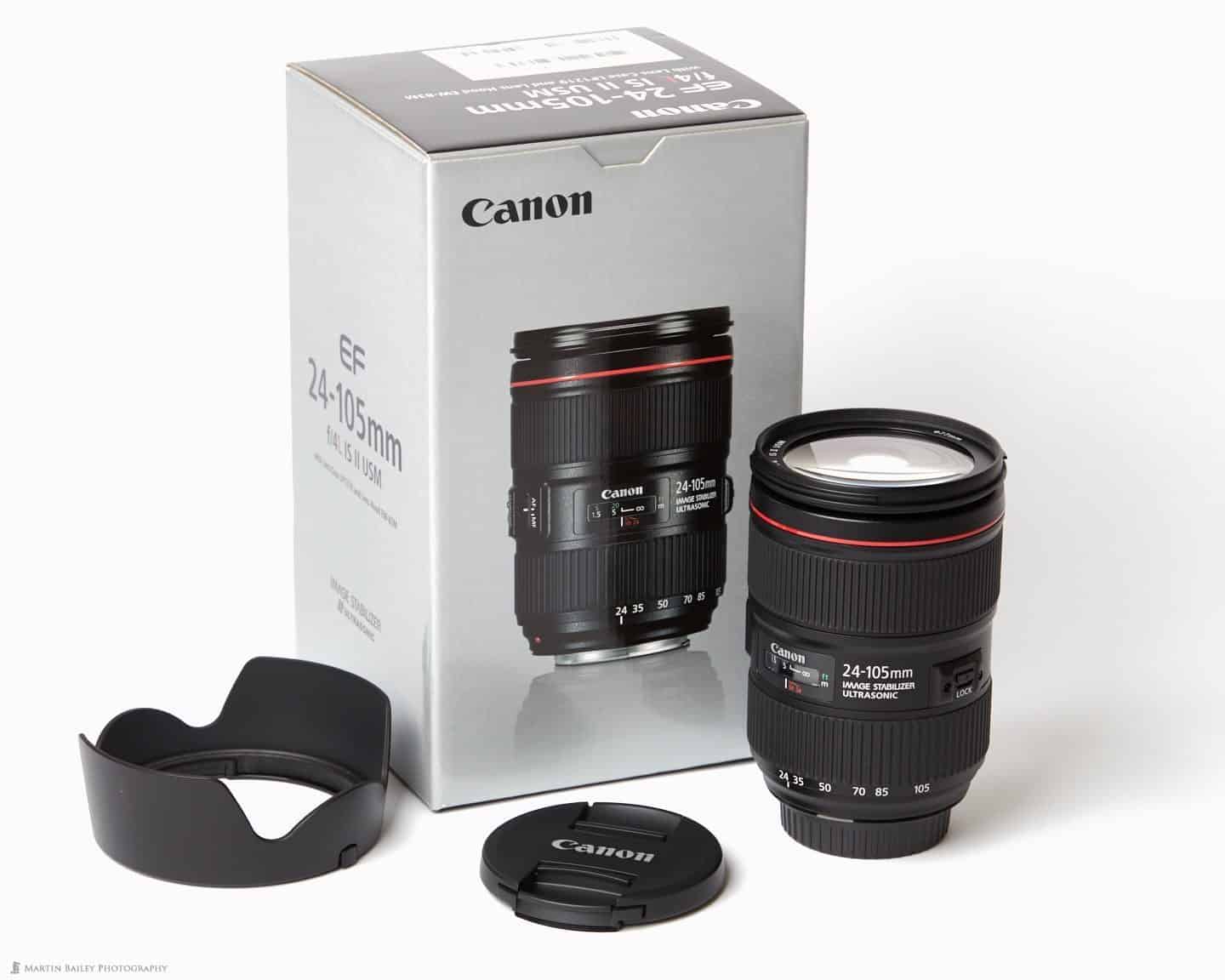
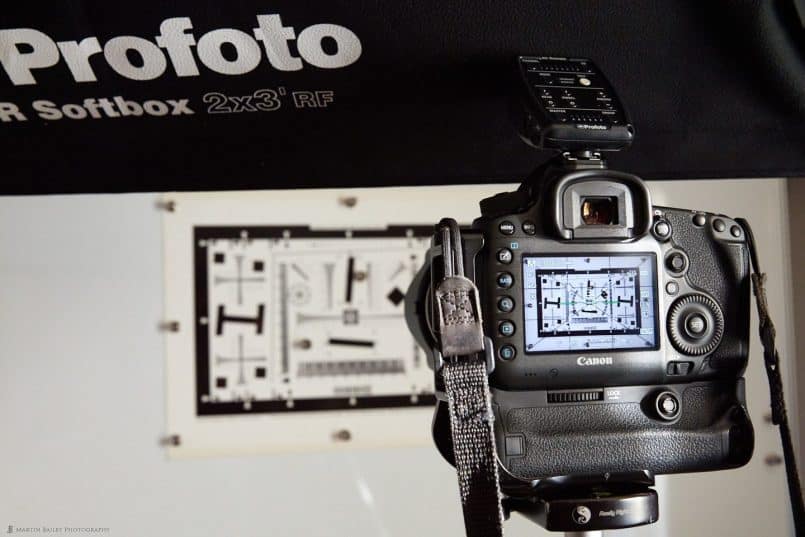
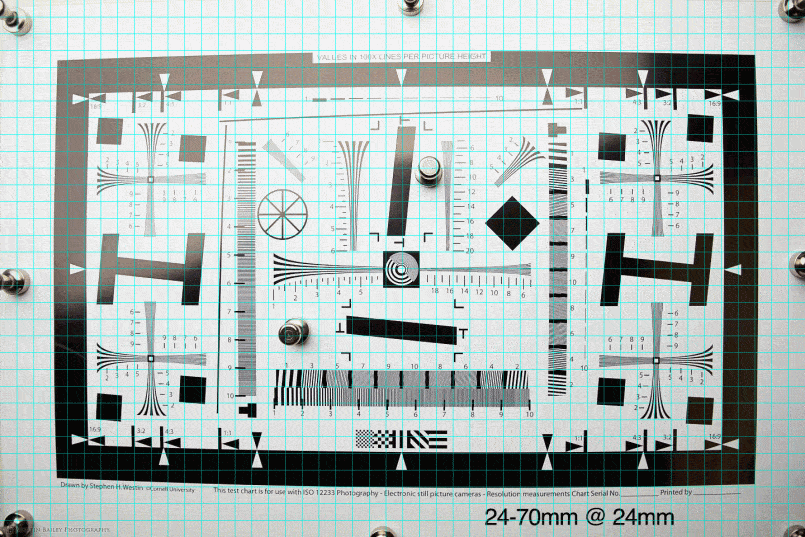
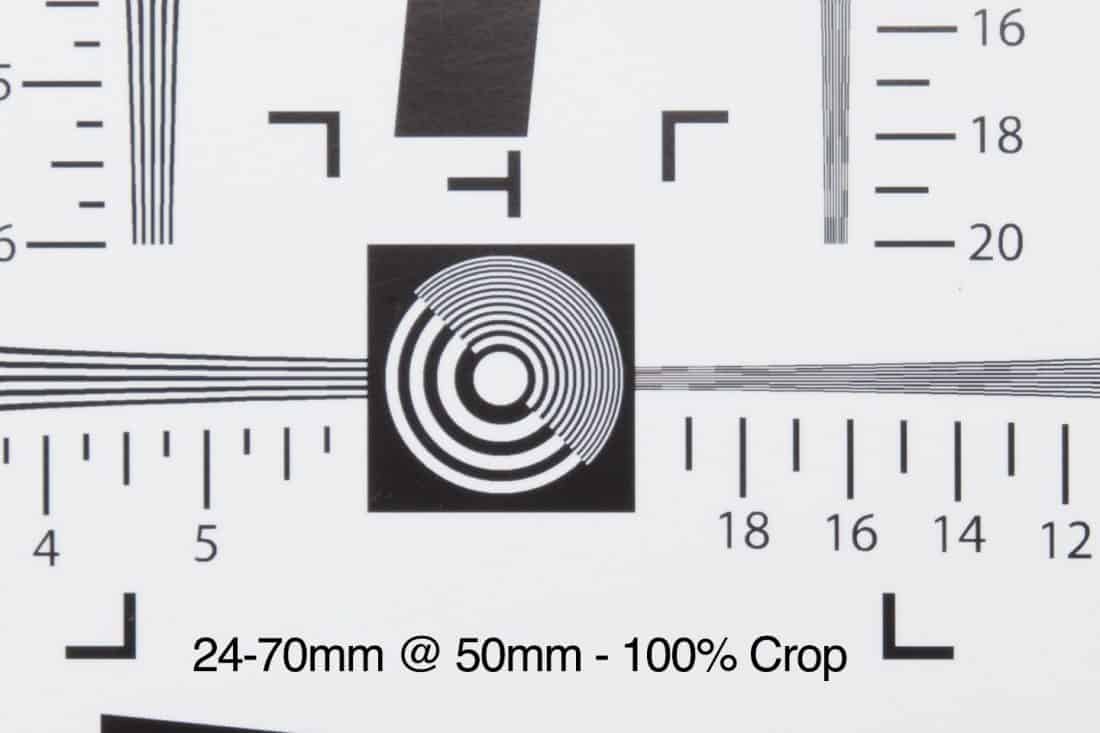
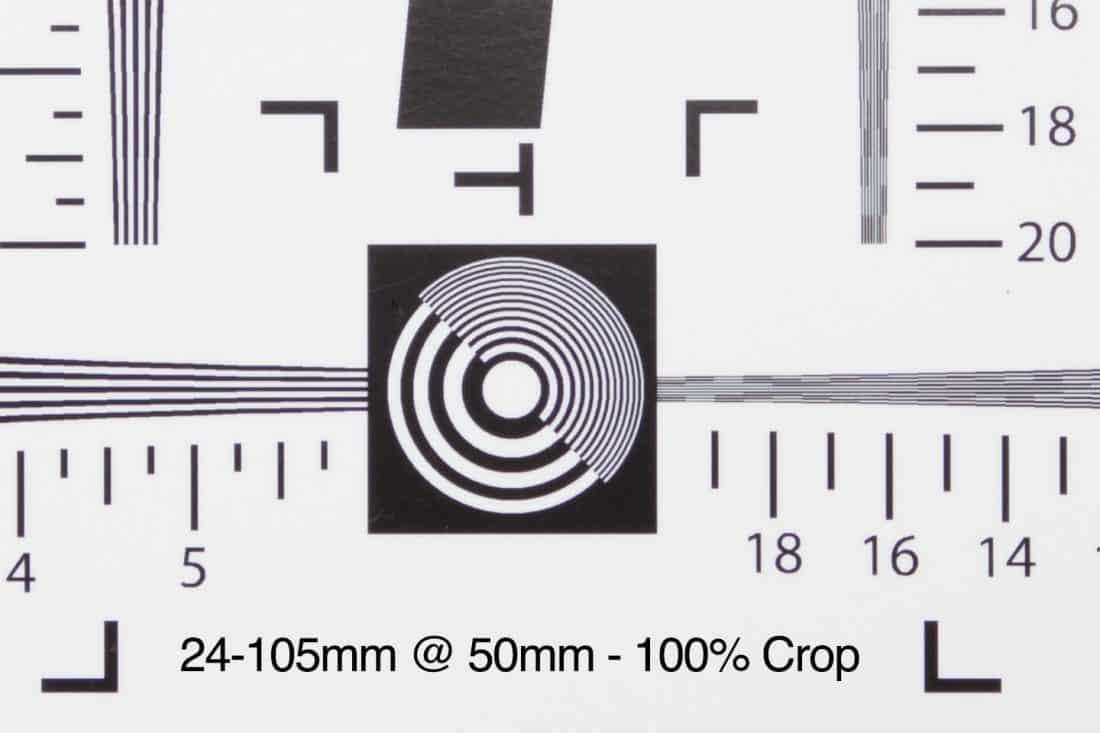
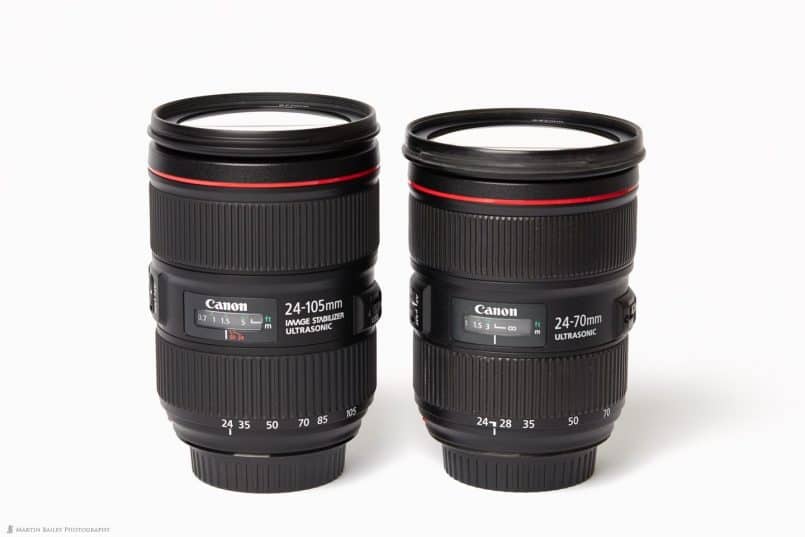
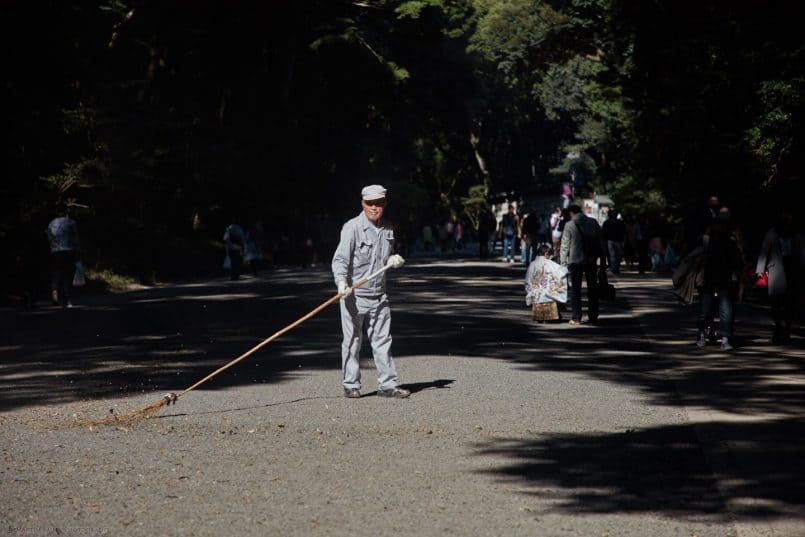





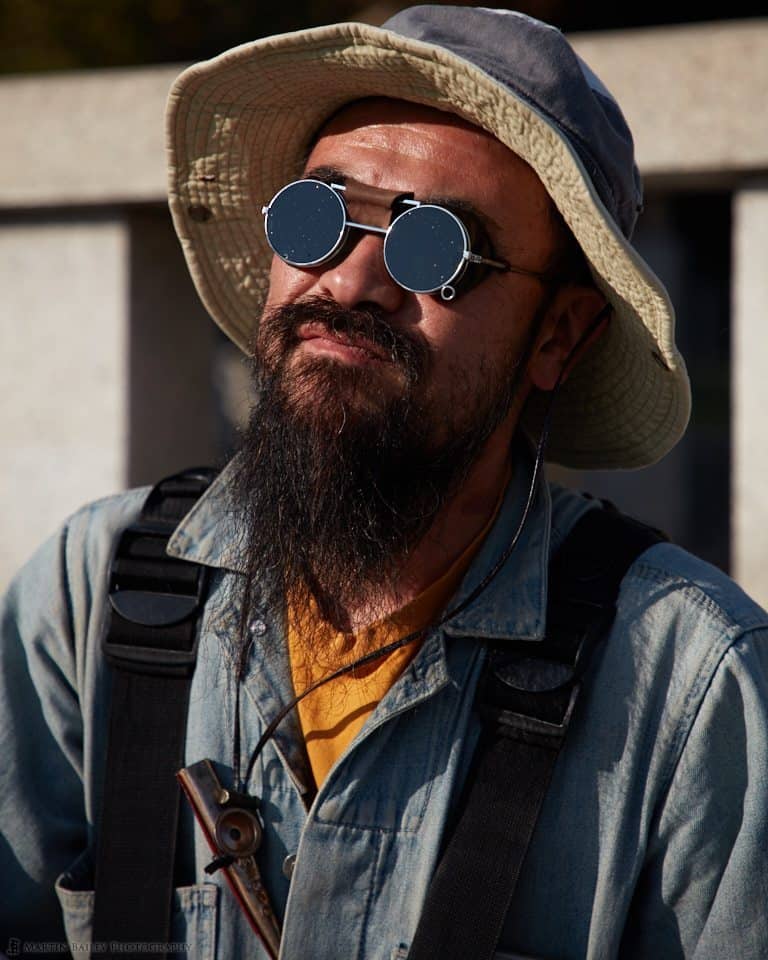

Hi Martin, Thanks for the great review, as always. The new 24-105 is certainly a compelling lens! I do have one question about your review. It’s clear that you are reviewing the EF24-105mm f4L IS II. But regarding the 24-70 you’re using for comparison, for the most part you do NOT identify it as the mark II version. I wonder if you could clarify, throughout this review, which version of the 24-70 you are referring to?
Best Regards
Hi Jim,
I’m pleased you found this useful.
Yes, I’m comparing to the Mark II 24-70mm lens. I do actually state that a couple of times in the above text.
Regards,
Martin.
Hi Martin,
Thanks for the review. Yes, you indeed state this when you show the picture, but Jim is right that it was not clear which lens it was, because you didn’t mention the fact that it was the II version in the other places
Best regards,
JP.
Hi JP,
I guess to a degree I may have assumed most people would know that I wouldn’t be using a Mark I lens when there is a Mark II version of the 24-70mm on the market. I recall mentioning those few times in case people didn’t know, but it was obviously not enough for you guys.
Sorry about that.
Regards,
Martin.
Hi Martin,
you’re right, I definitely expected you were comparing with the Mark II lens, but when I read these words I began to wonder:
“To cut a long story short, both lenses perform pretty much the same in terms of distortion with the new 24-105mm perhaps just beating the old 24-70mm by a hair. ”
And as JP mentioned, there were many places where it was not mentioned if the 24-70 was the original or the Mk II, hence the reason for my question. 🙂
It’s now clear that, when you said “old”, you meant the 24-70 Mk II is old compared with the 24-105 Mk II…
Anyway, I do appreciate your clarification on this fine review!
V/R
Jim
Martin – Thank you for review of this lens. It is one of the first. You stated you got rid of your original 24-105 10years ago because you found it to be too soft for your work. This would put it clear back in the original 5D era. I find this a little surprising. Given that the 5D was a 12mega pixel camera.
People seem to have a bit of a love/hate relationship with this lens. Some find it to be very good to great others not so good. I have often wondered if it is calibration issue with the lens. Have you ever tried the micro focus adjustment on your Canon arsenal of lenses? As i contemplate the purchase of new 5D mark IV I wonder how much more money I’ll end up spending on lenses. My photography is not nearly as sophisticated as yours but i do take it seriously.
Best Regards – Rich Ball
P.S. What version of RawDigger are you using? It seems like it could be a very useful program..
Hi Rich,
The ten years statement was a rough guess. For me, it was actually the 1Ds Mark III that started to show issues with the original 24-105mm. I just checked, and that was 9 years ago now, not ten.
I have tried calibrating my lenses, and have always gone back to turning off any micro-adjustments, because my lenses seem to focus more accurately without it.
Anyway, it wasn’t calibration, it was soft, as we reached 21 megapixels. I have heard the same thing about this lens. My friend Tim Vollmer has continued to use his original 24-105mm to this day, and swears by it, but he says he shoots in bursts and there is always a difference between the images, and he just picks the sharpest. 🙂
We all have different experiences with gear, and mine forced me to move away from the original lens some nine years ago (not ten) and I have never regretted it, because for most of that time, I was using the 70-200mm after my 24-70mm. No gaps, until the last few years.
I’m using the professional edition of RawDigger. I don’t use it a lot, but when I need it, it is very useful.
Cheers,
Martin.
Thank you for your response Martin. It only raises more questions in my over analytical engineers mind. I’ll let the sharpness issue rest. Not mentioned in your review is the increase of one stop in image stabilization capability. For a lens that many folks will use as a walking around lens this is significant. Plus in the 10 years between versions Canon’s lens design and fabrication capabilities have improved. I probably will upgrade in the future. Right now though I need to work with the new 5D mark IV I purchased yesterday and pay for it.
As an aside. In this weeks TWIP Podcast there was some discussion about supporting local camera stores. I made the long drive from Seattle to Portland Oregon and purchased the EOS 5D IV from Pro Photo supply. A fine all around camera store. To any in that area they are worthy of your support.
All the best – Rich Ball
Hi Rich,
As I’ve shown, there is no sharpness issue with the Mark II version of this lens, so I wouldn’t even worry about the Mark I version any more. The main issue is that it was out-resolved by 21MP and higher sensors.
I didn’t mention the IS because I didn’t really test it. I shot some of the images at 105mm at 1/40 of a second, but that’s only testing down to 1.5 stops slower than the recommended shutter speed for this focal length. Unlike other reviewers that simply regurgitate Canon’s marketing material, I like to talk from experience, and I personally don’t really rely on IS very much, so it wouldn’t make sense.
That’s great that you bought your 5D IV from a bricks and mortar store. I may not be doing that myself if I had to drive as far as you did, but for bodies and lenses I always buy from from a local store here in Tokyo.
Cheers,
Martin.
Thanks for the review. Are the distortion gifs correctly labelled? The 24mm and 50mm examples seem to be wider for the 24-105 than for the 24-70. And the 24-105 seems to have a wider view at 105mm than at 50mm. Or are they shot from different distances from the chart?
Regards
Shane
Hi Shane,
Yes, they are correct. As I mentioned above, the 24-70mm lens actually is wider than the 24-105mm at 24mm. They were both shot with the lens at its widest setting of 24mm with the camera on a tripod and it was not moved between shots. The target was not moved either.
There is always a bit of variance, but Canon seem to be stretching their reporting standards a little on this one.
Cheers,
Martin.
Hi Martin,
thank you for the detailled review. I’m struggling with the decision of replacing my 24-105 ver 1 with the new version II. I also have the 24-70mm/f 2.8 II, though, which is excellent. But it’s a bit short at the long end, so the 24-105 is a good alrounder for travelling if you don’t want to switch lenses all the time.
However, given your positive experience with the new lens there seems to be a considerable copy-to-copy variation. Correct me if I’m wrong but according to the TDP comparison tool the difference in sharpness between v1 and v2 doesn’t really look overwhelming to me (of course the color fringing is reduced in the new version), see.
http://www.the-digital-picture.com/Reviews/ISO-12233-Sample-Crops.aspx?Lens=355&Camera=979&Sample=0&FLI=0&API=2&LensComp=1072&CameraComp=979&SampleComp=0&FLIComp=0&APIComp=2
This seems to be true for for 24mm, 50mm, 70mm, 105mm
So it remains to be seen, if they got a bad copy compared to yours or you’ve got a very good performing sample. I know that Canon doesn’t recommend v1 of that zoom for the 5dsR, though Nevertheless, maybe it’s smart to wait a bit until the dust has settled. unless you have a chance to test several copies prior to the purchase ?
Best regards
Wolfgang
.
Hi Wolfgang,
They’re interesting results. As I mentioned, I don’t have an original 24-105 any more, so I can’t check for myself, but on the 5Ds R I wouldn’t have expected the Mark I to hold us that well. Having said that, my 70-200mm was starting to look a little soft on my 5D Mark III, but it sharpened up again on the 5Ds R, probably because of the lack of antialiasing filter, and maybe reduced mirror vibration in the 5Ds R.
Either way, there does seem to be a difference between lenses, but I don’t think it’s a matter of waiting for things to settle down. I always get my lenses from the first batch, and I have never had a bad lens. I actually have never had a bad lens so much that I personally doubt the theory that there are good and bad copies to a degree, but I have heard from people that have received duds (of other lenses) so we won’t go there.
My advice would be to buy the lens if you want one, and test it yourself as soon as it arrives. Most stores will allow you to exchange a lens within a certain period, usually two weeks, if there is anything wrong with it. Because you still have an original model, you could also do direct comparisons to see if you are happy with the difference.
Cheers,
Martin.
Hi Martin!
I love your review for this new 24-105 II!
On my old version of the Canon 24-105 L when I zoom in while in live view filming video I loose about a stop of light when going from 24mm to 105mm when it is stopped down to say f5.6. If I leave it at f4.0 there is no loss of light when zooming in. My question for you is on the new version (24-105L II) is there any loss of light when zooming in while the lens is stopped down to say f5.6? Can you also check to make sure it doesn’t loose light at f4.0 as well? Thanks in advance!
Rob
Thanks Rob!
The Mark I lens had a variable aperture, whereas the Mark II is a constant f/4, so this should no longer happen.
However, I just did a quick test, and the video does get slightly darker as I zoom in. I wouldn’t have thought this would happen with a constant aperture, but I don’t shoot much video while zooming.
Either way, I hope this helps.
Cheers,
Martin.
Thanks for your review Martin. I’m a little confused, did you own the 24-105L version or the non “L” version. In your statement above you stated that the original 24-105 lens has a variable f stop. That’s true for the non “L” version but the “L” version of the original 24-105L is a fixed f/4 lens. Which version did you own. Also I’m wondering if the 24-70 that you own is sharper than your original 24-105 lens. I’m trying to get a comparison between the original 24-105L and the mark ii version. I’m trying to decide if I’m willing to pay the $1100 for the new lens. I have the original 24-105L. In your opinion is it worth the money for the new version. Thanks in advance.
Hi Chris,
That’s my mistake. I owned the original L version, which was f4. I forget why I was thinking it was a variable, but I probably checked the specs and looked at the wrong lens. I didn’t even realize that there was a non-L lens in this range, so it would have been easy to mix up.
The 24-70mm II that I own is much sharper than the original 24-105mm. That’s why there is only a marginal improvement in sharpness over the 24-70mm. If I had been able to directly compare to the original 24-105mm there would have been more visible improvement.
Personally I think it’s worth the upgrade, as I don’t think the original 24-105mm can cope with 50 megapixels. I know a lot of people that still use the 24-105mm and have been happy with the results, but I found it too soft after the upgrade to the 5D Mark II, at 21 megapixels. The original 24-105mm was also not on that list of cameras that Canon released as being compatible with the 5Ds R, so we can assume that they also think it doesn’t have high enough resolution to work at 50 megapixels.
Of course, $1,100 has different perceived value to different people, but I thought it was worth buying, so I’ve already voted with my dollars. In fact, I bought mine in Japan, and paid the equivalent of around $1,400, so I paid even more.
Regards,
Martin.
Hi Martin. Thanks for the review. I am interested in this lens, and your pragmatic discussion lends more credibility to it. We agree that the 5DS R images shine with the best glass…
Your discussion here of manual lens corrections for post processing software that has not yet provided profiles for new lenses begged a question. Given that you have moved to Capture One Pro (COP), and several of your go-to lenses you mention in articles do not have profiles yet (e.g., Canon 100-400 II, 16-35 F4, and this new iteration of the 24-105), what is your impression of the added workflow effort, ease of use, and results of the lens correction tools for the COP? Phase One is noted for being pretty slow in providing lens profiles, so how burdensome is this effort?
Regards,
Kevin Smith
Hi Kevin,
There really isn’t a lot of extra effort required. For the most part, I don’t need to correct the image, because there isn’t a straight line to make the distortion obvious. When it is necessary, i.e. for a few of my seascape shots from Iceland, where there is a horizon to straighten, it’s a few minute job, and I honestly don’t mind this because the benefits of using Capture One Pro still outweigh the extra effort. I’m coming up to six months after my switch, and I still have absolutely no regrets.
Regards,
Martin.
Hi Martin, I’d appreciate very much your review. I Wonder if you have any experience with the 24-105f4 L ii in a APS body (say the 7d Miki or the 80d) . I’ve read some reviews the sharpness drops to ridiculous values. Wy’s that I really don’t no
Kind regards
Paulo
Hi Paulo,
I have not used the 24-105mm on an APS body, although the pixel pitch would be around the same if not a little bit larger than that of my 50-megapixel full-frame bodies, and the lens performs very well on these cameras.
Maybe you could share a link to a review that you’ve seen, and I can take a guess as to whether or not there is anything to worry about. My guess at this point would be that the reviewer either made a mistake or two while testing or has a duff copy of the lens, which sometimes happens, although I’ve never had a duff copy of a lens myself.
Another possibility would be that the 5Ds R is doing well with the lens because it doesn’t do any antialiasing, like other bodies, and that could theoretically cause softer images on similar pixel pitch cameras. I’d be surprised if this was the case but I can’t rule it out.
Regards,
Martin.
Hi Martin,
The reviews that I’ve pickup (there aren’t to many!) were about the 24-105 F4 L IS II in a body of a 7D mkII and all of those mentioned or were based on the DXO testing marks. I’ve also send this questions to Canons but all I’ve got was that all canon lens are very good and they can’t give opinions that could give some kind of a limitation for my choices.
Note: I tried to put here the DXO links but I got a spam reponse so I cut it out
As for comparison, i’d pick up some EF lens and looked for the DXO metrics the for 24-105 F4 L IS II, 24-104 F4 (sigmas) and 24-70 F2.8:
Sharpeness in the 5D mkIV body:
Canons 24-105 F4 L IS II USM L IS II: 15 P-Mpix
Sigmas 24-105 F4 DG OS HSM Art: 20 P-Mpix
Canons 24-70 F2.8 L II USM: 21 P-Mpix
In the 7D mkII body:
Canons 24-105 F4 L IS II USM L IS II: 5 P-Mpix
Sigmas 24-105 F4 DG OS HSM Art: 9 P-Mpix
Canons 24-70 F2.8 L II USM: 12 P-Mpix
The results in the 5DmkII are well aligned with all others reviews, including yours
The results in the 7DmkII (sharpeness) take a big down step but specialy for canons 24-105
As odd as it is, it gets odder when you compare this L lens with the “regular” EF-S lens, say the 18-135 and the 15-85 in the 7D Mkii.:
Canons 24-105 F4 L IS II USM L IS II: 5 P-Mpix
Canon EF-S 15-85 F3.5-5.6 IS USM: 8 P-Mpix
Canons EF-S 18-135 F3.5-5.6 IS: 7 P-Mpix
I know that a lens quality isn’t all about sharpeness but yould you buy it?
Best regards
Paulo
Hi Paulo,
Sorry I have to limit the number of URLs in posts. You are allowed up to three, as more than that is often a sign of spam.
I checked the DXO scores, and think they may have had a dud and just ran with it. There is no way that the Mark II 24-105mm f/4 lens is worse than the original version, but their scores would have you believe that this is the case. I owned the original 24-105mm and sold it when the 5D Mark II came out (if I recall) because it was starting to get soft.
You ask if I would buy the new 24-105mm Mark II, I did. This review is based on my experience with my own lens, and I have been incredibly happy with it since I bought it in November 2016.
Regards,
Martin.
Hi Martin
Thanks for your reply. That score is really something one can’t believe. If you trie the 24-105 F4 in a APS body please let me know your opinion
All the best
Paulo
Hi Paulo,
I will be sure to reply here if I ever do try the lens on a crop sensor camera.
All the best to you too.
Regards,
Martin.